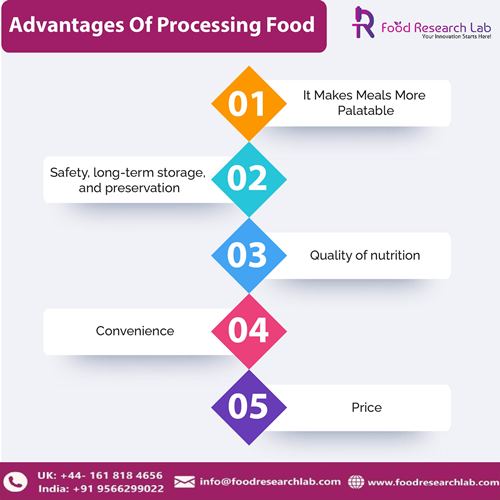
Advantages Of Processing Food
It Makes Meals More Palatable
Wheat and corn are examples of grain crops that are not edible in their natural state. Milling and grinding procedures turn them into flour, making bread, cereals, pasta, and other edible grain-based goods. Depending on the extent of processing, there are three varieties of flour; wherever possible, pick wholegrain. In our ‘Gain on grain’ infographic, you can discover more about the path of grain to bread.
Safety, long-term storage, and preservation
By removing hazardous microbes, processing improves or even guaranteed food safety. Pasteurization, airtight packing, and preservatives are the most common ways.
Quality of nutrition
Food processing can influence the nutritional quality of foods in two ways: it can improve it by introducing components that were previously unavailable, such as vitamin D (‘fortification’), or it can reduce it by lowering fat, salt, or sugar. It can also reduce some fibre, vitamins, and minerals due to excessive refining, heating, or freezing.
Convenience
Processing and packaging technologies help to meet modern-day time restrictions by delivering a variety of quick-to-prepare foods such as ready meals, packaged salads, sliced and canned fruits and vegetables that may be consumed “on the go.”
Price
Food processing has the potential to reduce food costs. Frozen vegetables, for example, offer a similar nutritional value to fresh vegetables but cost less because they’ve already been cooked, don’t contain inedible bits, can be purchased non-quantity, and last longer. In this approach, food processing extends the product’s shelf life and reduces waste, lowering the overall cost of food production.






